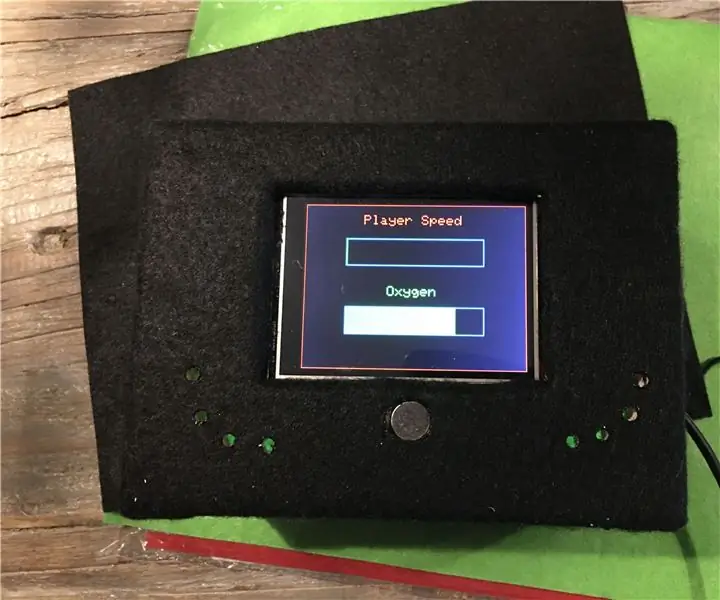
Sommario:
- Autore John Day [email protected].
- Public 2024-01-30 10:01.
- Ultima modifica 2025-06-01 06:09.
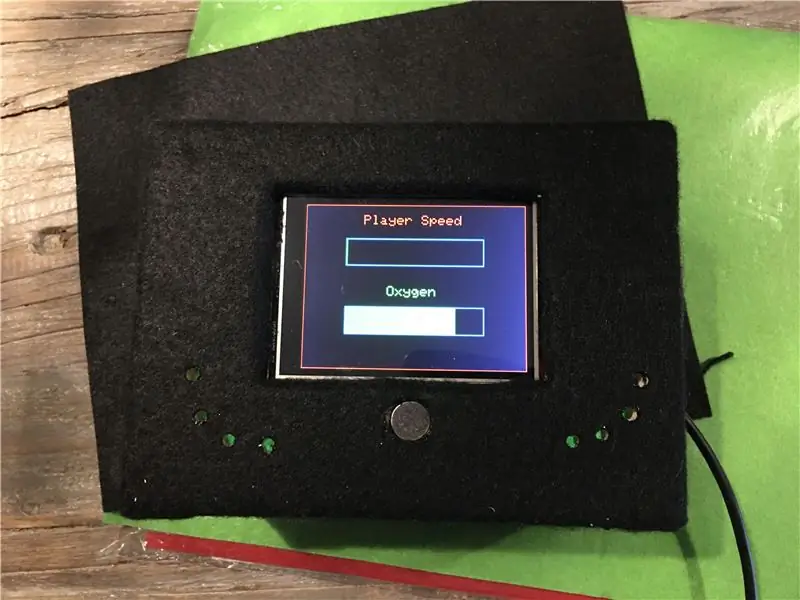
Questo progetto può essere utilizzato dal lettore in Unity con un touch screen su Arduino. Ook is er een waarde die na een tijdje steeds minder word, in mijn project heet deze waarde "oxygen". Hoe lager deze waarde word, hoe donkerder het scherm word van de player in Unity. Om deze waarde op te hogen moet je klappen. Als deze waarde helemaal leeg is zal je niet veel meer zien in de game. Ook er een LED lampje bij het project, deze laat naast de game zien of de "oxygen" waarde gevaarlijk word of niet. Groen = goed, Blauw = gaat nog, Rood = gevaarlijk.
Controlli di gioco:
-
Touch screen:
- Linker kant van het scherm -> snelheid omlaag.
- Rechter kant van het scherm -> snelheid omhoog.
-
Sensore di battito:
Klappen om de Oxygen meter weer voller te krijgen
-
Musica:
Fotocamera rotonda
-
(extra):
A + D toetsen: Om extra bij te sturen
Forniture
- 1x Macchine verbali Sensore Klap
- 1x lampada LED (RGB)
- 1x Touch screen (2,8 pollici ILI9341 240x320 SPI TFT LCD Display Touch Panel SPI Modulo porta seriale)
- 1x Arduino Uno
Passaggio 1: collegamento: sensore Klap
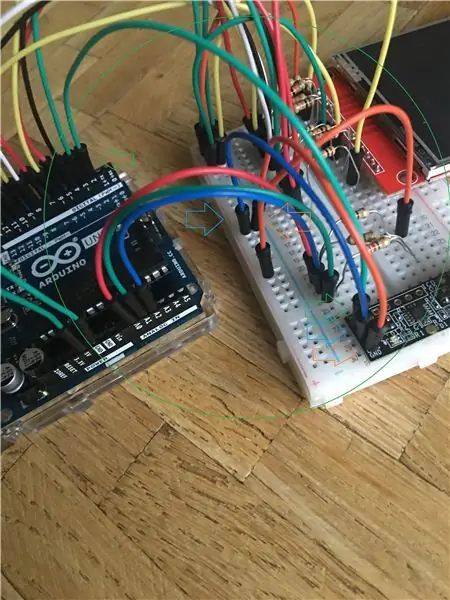
- GND: In de - (terra)
- PWR: In de + (5v)
- Fuori: In de 2 (digitale)
Passaggio 2: collegamento: LED
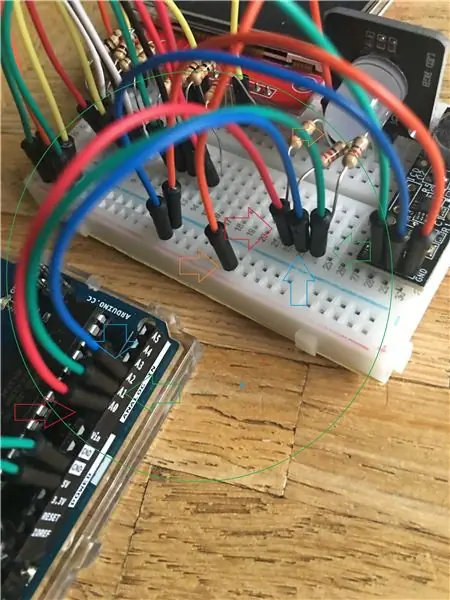
- V(tensione): in de + (5v)
- R: In A0 + weerstand (Rood, Rood, Bruin, Goud)
- B: In A2 + weerstand (R. R. B. G)
- SOL: In A1 + weerstand (R. R. B. G)
Passaggio 3: connessione: touch screen

- VCC: In de + (5v)
- GND: In de - (terra)
- CS: In 10 + weerstand (Bruin, Zwart, Orange, Goud)
- RESET: In 8 + weerstand (B. Z. O. G)
- DC: In 9 + weerstand (B. Z. O. G)
- SDI MOSI: In 11 + weerstand (B. Z. O. G)
- SCK: In 13 + weerstand (B. Z. O. G)
- LED: In de + (5v)
- SDO MISO: In 12
- T_CLK: In 3 + weerstand (B. Z. O. G)
- T_CS: In 4 + weerstand (B. Z. O. G)
- T_DIN: In 5 + weerstand (B. Z. O. G)
- T_DO: In 6
- T_IRQ: in 7 + weerstand (B. Z. O. G)
Fase 4: Overzicht: Alles
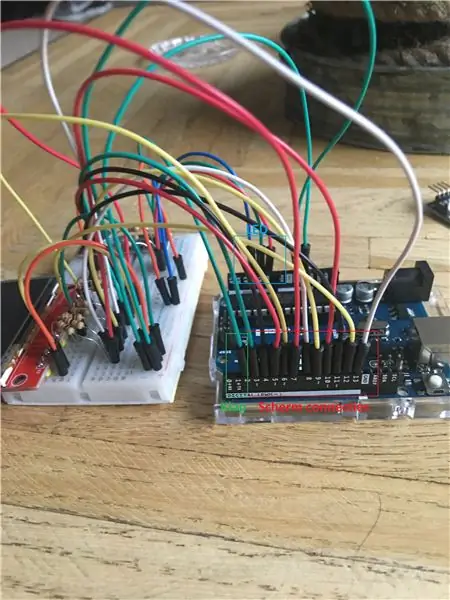
Sensore di battito:
- GND: In de - (terra)
- PWR: In de + (5v)
- Fuori: In de 2 (digitale)
GUIDATO:
- V(tensione): in de + (5v)
- R: In A0 + weerstand (Rood, Rood, Bruin, Goud)
- B: In A2 + weerstand (R. R. B. G)
- SOL: In A1 + weerstand (R. R. B. G)
Touch screen:
- VCC: In de + (5v)
- GND: In de - (terra)
- CS: In 10 + weerstand (Bruin, Zwart, Orange, Goud)
- RESET: In 8 + weerstand (B. Z. O. G)
- DC: In 9 + weerstand (B. Z. O. G)
- SDI MOSI: In 11 + weerstand (B. Z. O. G)
- SCK: In 13 + weerstand (B. Z. O. G)
- LED: In de + (5v)
- SDO MISO: In 12
- T_CLK: In 3 + weerstand (B. Z. O. G)
- T_CS: In 4 + weerstand (B. Z. O. G)
- T_DIN: In 5 + weerstand (B. Z. O. G)
- T_DO: In 6
- T_IRQ: in 7 + weerstand (B. Z. O. G)
Passaggio 5: codice
Biblioteche:
- URTouch (https://www.rinkydinkelectronics.com/library.php?id=92)
- Adafruit_ILI9341
- Adafruit_GFX
Passaggio 6: configurazione dell'unità
drive.google.com/open?id=1whpSVED7v-ocgt0IgCIx7Cu2EvHo6fHx (script)
1. Fare un nuovo progetto Unity3D aan.
2. Scarica l'asset: "Ardity" e l'importatore deze
2a: Als er error zijn: Ga naar edit -> impostazioni progetto -> Player -> Altre impostazioni -> "Livello di compatibilità API" -> verander deze naar ". Net 4.x"
3. Script di "CameraControl" sulla fotocamera.
4. Importa un lettore di una capsula 3D e lo script "PlayerController" più vicino.
5. Nella cartella de Ardity -> Prefabbricati -> SerialController. Dormi come nella scena/gerarchia
6. Creare un oggetto di gioco vuoto in corrispondenza dello script "ArduinoListener" su un punto.
7. Visualizza un pannello dell'interfaccia utente in modo che non sia chiaro.
8. Nel player: voeg de panel toe bij: "Fade Overlay" e de ArduinoListener gameobject bij "Listener"
9. Voeg aan de player e un LookAt point toe: Crea un player vuoto (come una parola figlio del player) e dormi dopo che è arrivato il player. Voeg deze toe in de camera bij: "Target"
10: In SerialController voeg bij "Message Listener" di ArduinoListener toe.
11. Fai un piano di gioco del giocatore che può essere aperto.
12: Sluit de Arduino e gioca.
Consigliato:
Controlla il potente motore elettrico per skateboard E-Bike 350W DC utilizzando Arduino e BTS7960b: 9 passaggi
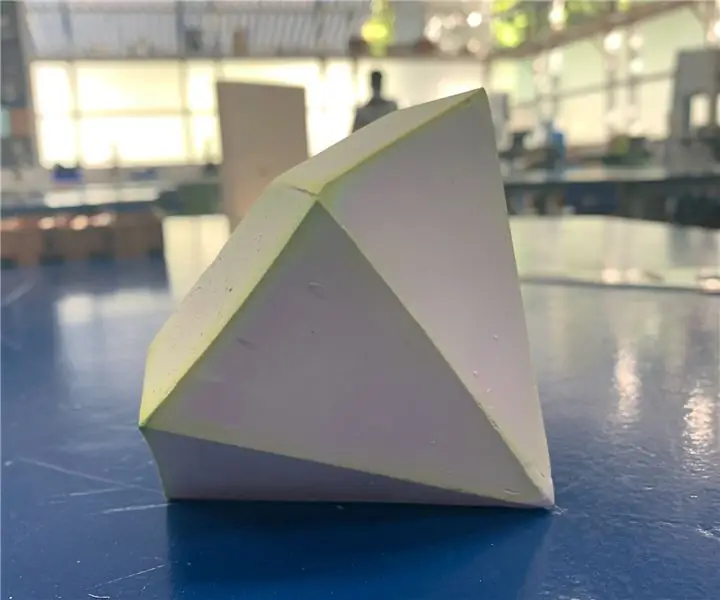
Controlla il potente motore elettrico per skateboard E-Bike 350 W CC utilizzando Arduino e BTS7960b: In questo tutorial impareremo come controllare un motore CC utilizzando Arduino e il driver Dc bts7960b. Il motore può essere un 350 W o solo un piccolo motore CC Toy arduino purché la sua potenza non superi la corrente massima del driver BTS7960b. Guarda il video
Arduino controlla la velocità e la direzione del motore CC utilizzando un potenziometro, display OLED e pulsanti: 6 passaggi
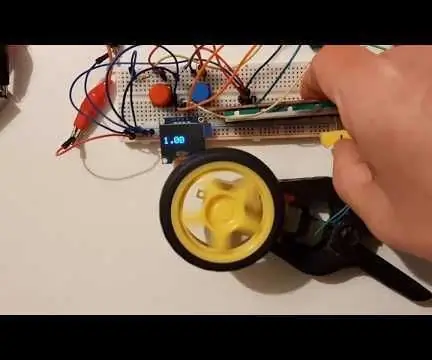
Arduino controlla la velocità e la direzione del motore CC utilizzando un potenziometro, display OLED e pulsanti: in questo tutorial impareremo come utilizzare un driver L298N DC MOTOR CONTROL e un potenziometro per controllare la velocità e la direzione di un motore CC con due pulsanti e visualizzare il valore del potenziometro sul display OLED.Guarda un video dimostrativo
Serratura elettrica con lettore di impronte digitali e lettore RFID: 11 passaggi (con immagini)
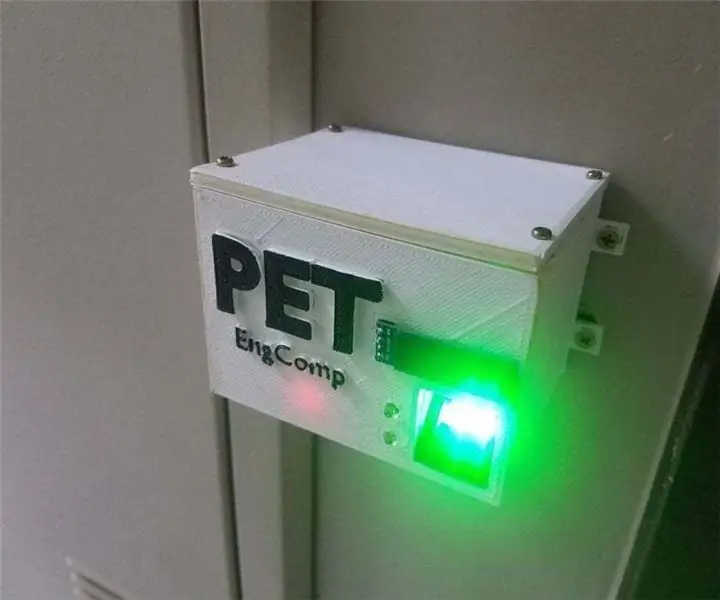
Serratura elettrica con lettore di impronte digitali e lettore RFID: Il progetto è stato progettato per evitare la necessità di utilizzare le chiavi, per raggiungere il nostro obiettivo abbiamo utilizzato un sensore ottico di impronte digitali e un Arduino. Tuttavia ci sono persone che hanno un'impronta digitale illeggibile e il sensore non la riconosce. Poi pensando a
Pedale Arduino (controlla il tuo amplificatore per chitarra con Arduino): 10 passaggi (con immagini)
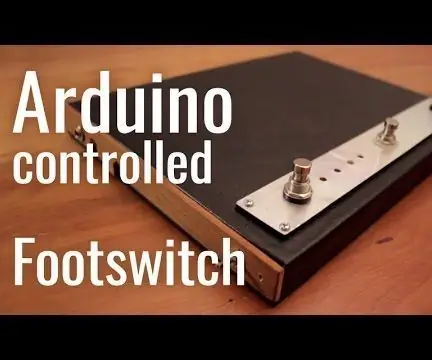
Arduino Footswitch (controlla il tuo amplificatore per chitarra con Arduino): questo è il mio primo progetto in questa comunità e nella piattaforma arduino, e ora è appena stato presentato nel sito Web ufficiale di Arduino. Grazie a tutti per il vostro supporto!! Quindi, suonate musica dal vivo e usate il metronomo o le tracce di clic per sincronizzare il vostro
Collegare un lettore MP3 a un lettore di nastri: 6 passaggi (con immagini)
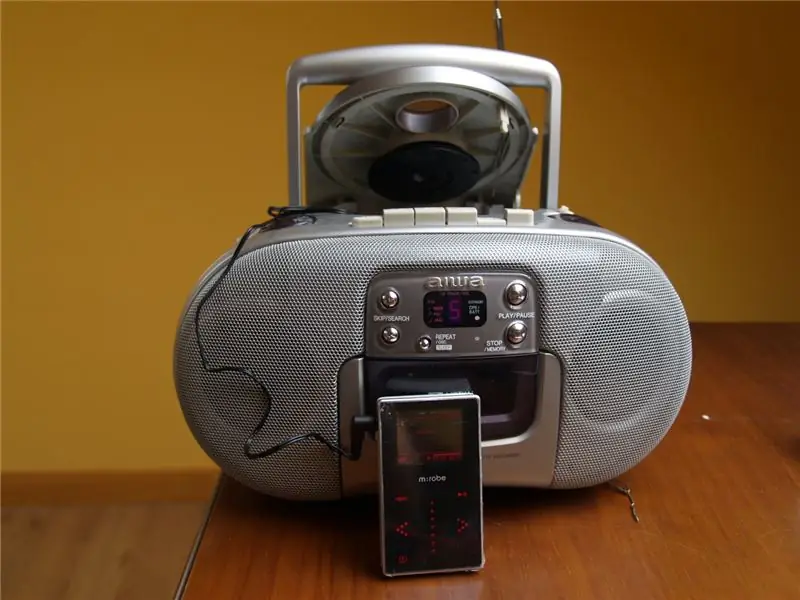
Collegare un lettore MP3 a un lettore di nastri: come collegare un lettore mp3, o altra sorgente stereo, a un lettore di nastri per ascoltare la musica
